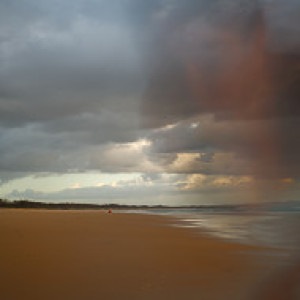Hanging Coffins
We left Manila at 8PM after battling a horrendous traffic that almost made us miss our bus. What should have been a half hour trip turned into two hours and would have been longer if not for the brilliant maneuverings of our cab driver. Another race to catch the bus good thing Jane is a fast runner/walker otherwise we would have been left waiting for the next bus scheduled to leave three hours later!
The road trip was pretty long and we reached my favourite mountain hideaway, Sagada, mid-day. The view on our way to Sagada was spectacular. Rolling hills, unending mountain ranges and rice terraces that have been drawn out by hand on the side of the Mountains of the Cordillera that were covered by thousands of trees and rice paddies.
Our first stop after arriving in Sagada was to check out the local weaving that originated from the Igorots, a generic name for the 6 ethnic tribes of the Cordillera region. We then treked up to Echo Valley where we had to pass an old cemetery and a few cows that Jane bravely shooed away while standing on top of an old grave. Yikes!
The Echo Valley afforded us a view of the hundreds of years old Hanging Coffins of the Igorots, most likely of the Kankanaey ethnic tribe. The oldest identified hanging coffin in the area was 500 y/o while the most recent is less than 2 years old. Apparently there are some really old hanging coffins in the area that have not been located as yet. There are about 10% of the ethnic community that still practice the tradition of mummification and hanging of the coffins but burial in this manner is only a privilege reserved for the elders of the community. If you are so unlucky as to die young, you get a Christian burial. :) You are also required to slaughter 20 pigs (if I heard the guide say it correctly) as part of the burial rite. They use a hard wood tree for the coffin and hang it from the cliffs by using rope and a kind of platform hinged onto the face of the cliff.
The Sagada area is full of these hanging coffins and some coffins are also stacked up in mouths of caves. I failed to find out what the difference was between those buried in the caves and the coffins that were hanged on cliffs. One thing they have in common though is the symbol of the gecko carved on top of the coffin which for the Igorots symbolizes long life. I guess they too believe in the afterlife or some form of it.
- 0
- 0
- Nikon D700
- 1/100
- f/2.8
- 50mm
- 100

Comments
Sign in or get an account to comment.


